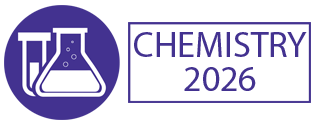Title : Radioactivity and heavy metal levels in mining areas of the State of Zacatecas, Mexico
Abstract:
Mining activities are prone to release toxic elements into soils through tailings, worthless ores, and subsequent smelting operations, which have caused unfavorable consequences to human health and aquatic environments. The State of Zacatecas (Mexico) is one of the most affected places by pollution from the mining industry. In this sense, the objective of this work is to present the results of radioactivity and heavy metal content in soil samples collected in mining areas of the State of Zacatecas, Mexico, as an example of artisanal and small-scale mining and its impact in the environment.
For this purpose, 21 samples from two areas have been collected (6 samples from Zone A and 15 samples from Zone B) to evaluate the level of radioactivity and the degree of contamination by heavy metals.
The activity concentration for 238U and 232Th is within typical values, but 226Ra exceeds the value of 60 Bq kg- 1 in both areas. In some places, the concentration of 40K is higher than the world average, according to UNSCEAR. The radium equivalent activity (Raeq) and absorbed dose (D) indicate that some sites present a radiological risk for the population. Excess lifetime cancer risk (ELCR) presents a higher risk than the world average in both sampled areas. Other parameters, such as the radiation index Ri, the external risk index Hex, and the internal risk index Hin, also indicate that there is a greater risk due to radiation exposure in these areas.
In the case of heavy metals, some parameters, such as the enrichment factor (EF), the geoaccumulation index (Igeo), and the contamination factor (CF), show that some places in Zone A and Zone B are contaminated with arsenic and lead. In addition, the concentration of selenium obtained by ICP-MS in the sampled soil is higher than the average in the Earth's crust, both in mine waste dumps and in unaltered soil, which indicates that the background concentration for selenium in these places is higher than the world average.
Audience Take Away:
- The public will be able to learn how to evaluate the radioactivity and heavy metal levels in a mining area.
- Additionally, it will be provided an interpretation of the results obtained.
- Furthermore, this study supply information on the problem of abandoned mining areas, which should be reclaimed.




